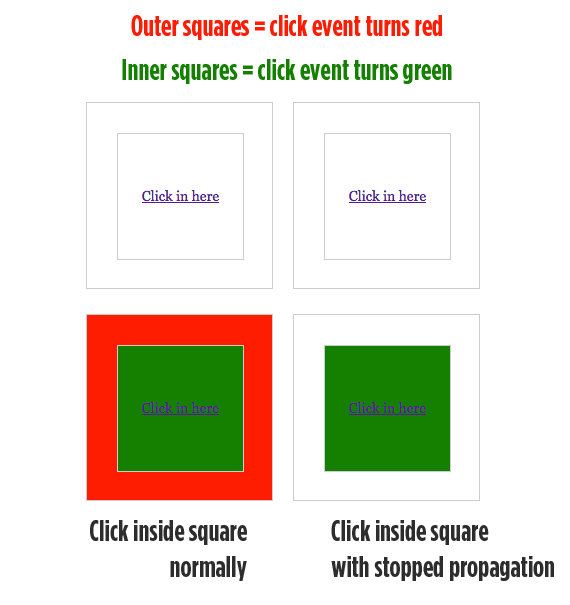Rumah >hujung hadapan web >tutorial js >return false;和e.preventDefault();的区别_javascript技巧
return false;和e.preventDefault();的区别_javascript技巧
- WBOYWBOYWBOYWBOYWBOYWBOYWBOYWBOYWBOYWBOYWBOYWBOYWBasal
- 2016-05-16 18:23:181225semak imbas
Have you ever seen those two things (in the title) being used in jQuery? Here is a simple example:
复制代码 代码如下:
$("a").click(function() {
$("body").append($(this).attr("href"));
return false;
}
That code would append the href attribute as text to the body every time a link was clicked but not actually go to that link. The return false; part of that code prevents the browser from performing the default action for that link. That exact thing could be written like this:
复制代码 代码如下:
$("a").click(function(e) {
$("body").append($(this).attr("href"));
e.preventDefault();
}
So what's the difference?
The difference is that return false; takes things a bit further in that it also prevents that event from propagating (or “bubbling up”) the DOM. The you-may-not-know-this bit is that whenever an event happens on an element, that event is triggered on every single parent element as well. So let's say you have a box inside a box. Both boxes have click events on them. Click on the inner box, a click will trigger on the outer box too, unless you prevent propagation. Like this:

演示地址:http://css-tricks.com/examples/ReturnFalse/
So in other words:
复制代码 代码如下:
function() {
return false;
}
// IS EQUAL TO
function(e) {
e.preventDefault();
e.stopPropagation();
}
It's all probably a lot more complicated than this and articles like this probably explain it all a lot better.
参考:
1.The difference between ‘return false;' and ‘e.preventDefault();'
2.Event order
测试代码打包下载
Kenyataan:
Kandungan artikel ini disumbangkan secara sukarela oleh netizen, dan hak cipta adalah milik pengarang asal. Laman web ini tidak memikul tanggungjawab undang-undang yang sepadan. Jika anda menemui sebarang kandungan yang disyaki plagiarisme atau pelanggaran, sila hubungi admin@php.cn
Artikel sebelumnya:DIV+CSS设计的动感横向导航_导航菜单Artikel seterusnya:通过继承IHttpHandle实现JS插件的组织与管理_javascript技巧
Artikel berkaitan
Lihat lagi- Analisis mendalam bagi komponen kumpulan senarai Bootstrap
- Penjelasan terperinci tentang fungsi JavaScript kari
- Contoh lengkap penjanaan kata laluan JS dan pengesanan kekuatan (dengan muat turun kod sumber demo)
- Angularjs menyepadukan UI WeChat (weui)
- Cara cepat bertukar antara Cina Tradisional dan Cina Ringkas dengan JavaScript dan helah untuk tapak web menyokong pertukaran antara kemahiran_javascript Cina Ringkas dan Tradisional

